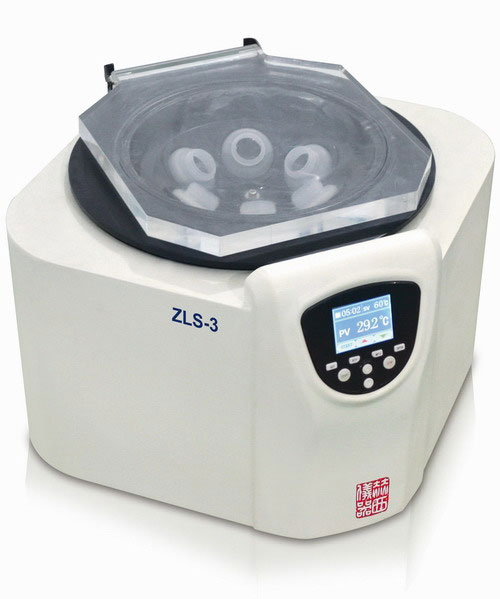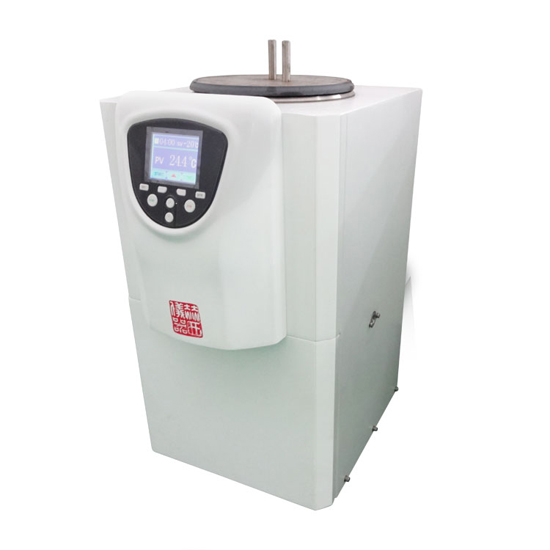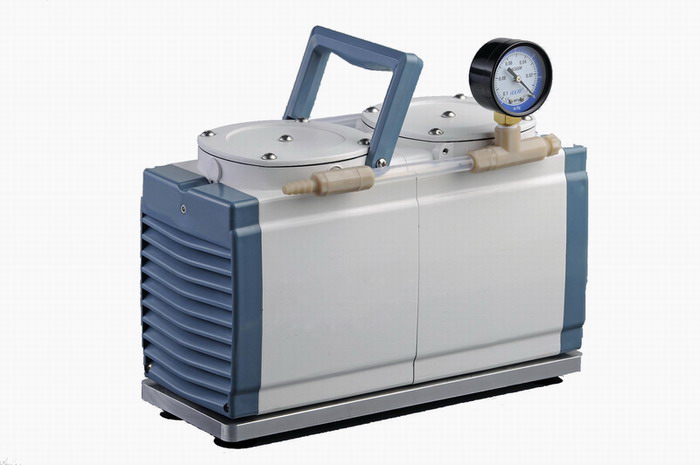Samples analyzed and processed by methods such as electrophoresis, GC, HPLC, etc. for vulnerable samples of biological samples are suitable for centrifugation. The purpose of centrifugation is to concentrate the sample while avoiding the following problems:
A. cross-contamination; B: sample loss; C: sample denaturation; D: sample activity decreased; E: oxidation;
The vacuum centrifugal concentrator combines the following advantages:
a: high recovery rate; b: harmless to the environment; c: simple operation;
The difference between centrifugal concentration and centrifugal separation technology
1. Centrifugal separation: Separation of suspended solids from liquids.
2. Centrifuge the concentrated solution, and occasionally the sample will be completely dry. In this case, the sample must be inorganic or taken away immediately after drying.

ZLS-3 vacuum centrifugal concentrator
Centrifugal concentration technology: vacuuming, lowering the gas pressure, thereby lowering the boiling point of the solvent, allowing the solvent to evaporate at a low temperature to apply heat (energy) to the cavity, thereby increasing the evaporation rate. The sample temperature does not rise! The sample is at a suitable centrifugal speed. Centrifugation, producing a small amount of "g" centrifugal force, thus preventing the loss of the sample due to "bumping", or the foaming of the centrifuge tube easily caused by heating and centrifugation.
Centrifugal concentration principle:
vacuum:
1. At a given pressure, the boiling point of the solvent is fixed. Different energies are applied to different solvents, but there is no effect on the temperature of the sample, because the boiling point of the sample is constant at a specific pressure, as long as the evaporation is still The temperature of the sample did not change.
2. Reduce the pressure of the solvent (increasing the vacuum) This is a key factor! .
3. The boiling point of the liquid will decrease under vacuum. The vacuum can also suck the unconcentrated gas from the cavity, thereby reducing the interference and resistance when the steam flows to the cold trap. The sample can be kept by rapidly evaporating the solvent. Low temperature state.
energy:
The input of energy (heat) can supplement the energy required for the evaporation process. It is very important to accelerate the evaporation rate. The energy must be indirectly applied to the sample. Otherwise, the sample will be locally heated, resulting in damage to the sample. Convection under vacuum. It is impossible to do so, so the radiant heating chamber can be as high as 80 ° C, while the temperature of the sample can be kept at the boiling point (perhaps 5 ° C) until the sample is completely dry and the temperature rises. If the sample has a low boiling point under vacuum, the sample will likely freeze if the sample continues to evaporate without applying energy to the sample... Concentration is impossible!
'g' centrifugal force effect
1. When the solvent evaporates (boiling), bubbles will form =>
2. Solvents tend to "bump" or blister, and small liquids will splash out of the tube.
3. Let the sample rotate in the centrifugal concentrator to generate enough 'g' centrifugal force to allow the sample to stay in the centrifuge tube.
4. No sample loss: the sample is concentrated or dried and attached to the bottom of the tube, which is ideal for quantitative recovery.
5. No cross-contamination.
6. In the corner rotor, the surface area of ​​the liquid is increased, thus speeding up the rate of sample evaporation and concentration
Sample safety:
1. Heat sensitive samples are not allowed to be completely dry.
2. The low temperature effect caused by the absorption of energy during the phase change disappears, and the sample cannot be protected.
3. The vacuum pressure gauge can be used to determine whether the critical point of concentration
4. Immediately after starting the operation, observe the maximum vacuum [minimum air pressure]
5. The generation of steam will cause the rise of air pressure
6. As the solvent continues to evaporate and decrease, the amount of steam generated will be less and less, and the pressure will drop.
7. Stop running until the minimum air pressure is reached.
8. The sample is still wet.
Conclusion: If the sample is centrifuged, at a suitable centrifugal speed / 'g' centrifugal force, the sample is replenished with energy by irradiation under vacuum and will be concentrated in a very safe state.
Centrifugal Concentration System: The complete system should contain the following components.
The simplest configuration: concentrator, rotor, + connecting line + vacuum pump.
Complete preparation: concentrator + rotor + diaphragm pump or high vacuum oil pump and oil filter + connecting line, + cold trap + flask + chemical trap and absorption column + vacuum control valve + vacuum pressure gauge + trolley.
Function of the vacuum centrifugal concentrator : Centrifugal + vacuum control (cylinder must be centrifuged at a sufficient rpm before applying vacuum)
Concentrator design – cold trap

Hersey Cold Trap
Cold trap characteristics:
1. Cycle mode: closed loop
2. Temperature setting range: normal temperature ~ -40 ° C
3. Capacity: 4 liters
4. Temperature adjustment accuracy: ± 1 ° C
5. Compressor refrigerant: R404a
6. Adopt Hersie TFT True Color 4.3-inch screen, touch button dual control system cold trap temperature.
7. The cold trap can be used with a vacuum centrifugal concentrator.
Concentrator design – vacuum pump

Hershey offers two types of vacuum pumps.
(transverse diaphragm) - oil-free pump (oil-free pump is very resistant to strong acids and organic solvents.)
Vacuum rotary vane oil pump (no oil pump without maintenance (no oil change required).)
Oil-free pumps are usually selected. In some specific applications, vacuum pumps are required.
Liquid Bleach,Laundry Detergent Stain Removal,Stain Removal Bleach,Laundry Detergent Bleach
Wuxi Keni Daily Cosmetics Co.,Ltd , https://www.kenidailycosmetics.com